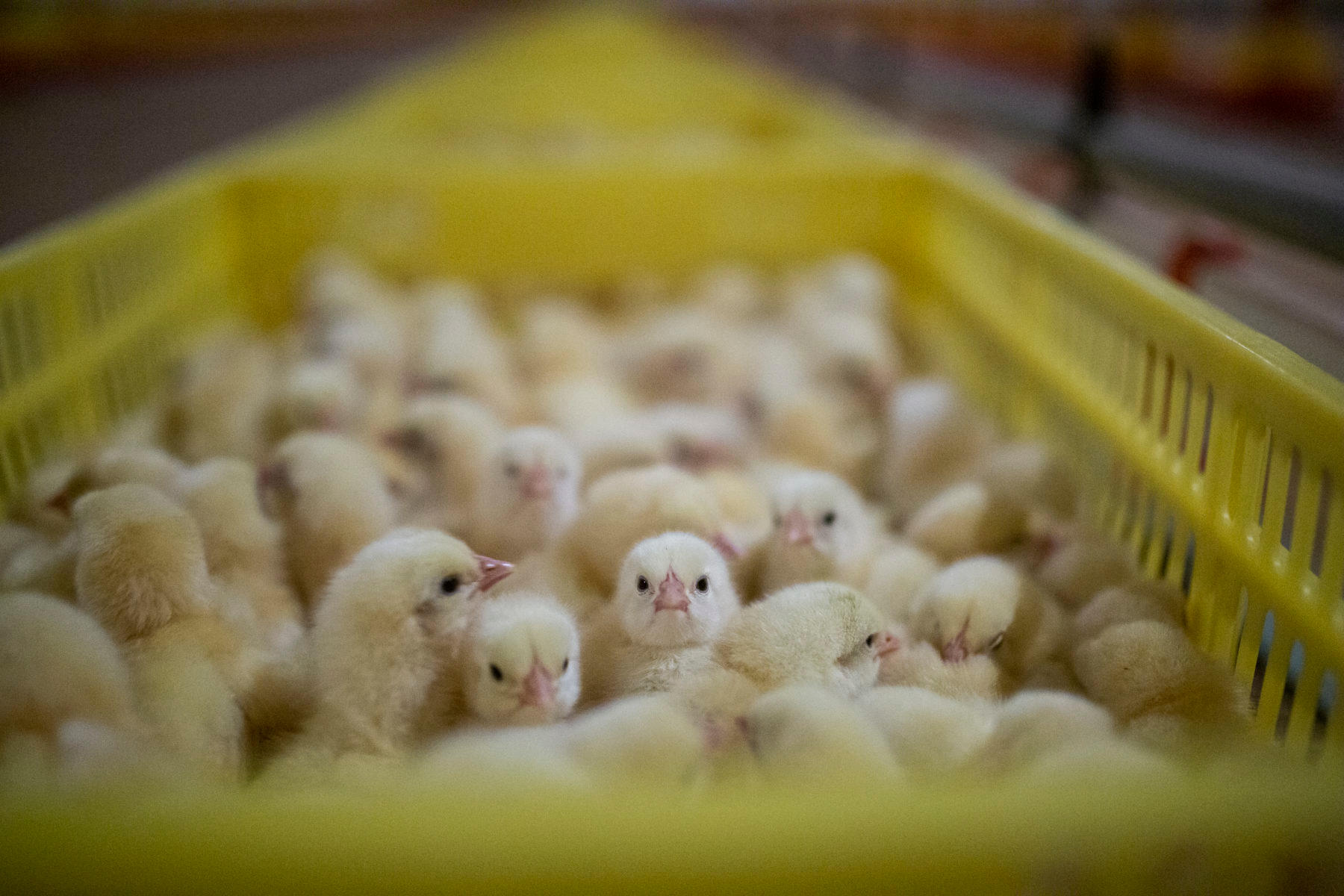




This groundbreaking technology is a promising step toward a kinder future.

For billions of male chicks born into the egg industry, their first day of life is often their last day of life.
As male chicks cannot lay eggs, they are deemed useless—a “byproduct”—by the egg industry. Many of them are tossed, fully conscious, into industrial shredders, or gassed to death. This widespread industry practice is called chick culling, and there has been no commercially viable alternative for the US egg market.
Until now. In December 2024, US specialty egg producer NestFresh Eggs had its first hatch of in-ovo sexed chicks. In-ovo sexing technology determines the sex of chicks before they hatch—precluding the need for male chick culling. As male and female embryos of brown layer lines have different colored feathers, NestFresh and German firm Agri Advanced Technologies (AAT) use hyperspectral imaging technology to look through an egg’s shell to identify the male embryos, and remove them from the incubation process.
This progress heralds an exciting race to the top for companies that value ethical sourcing: In February 2025, sustainable poultry farm Kipster plans to implement Respeggt technology to honor its commitment to end chick culling. Respeggt will be the first in-ovo sexing technology in the US applicable to both white and brown chicken breeds. This is a significant development, as white eggs represent the majority of the US market (around 81%). Having a more comprehensive technology has the potential to spare even more chicks from culling.
On this news, The Humane League’s Senior Animal Welfare Scientist and veterinarian Dr. Giovana Vieira said: “For years, The Humane League encouraged United Egg Producers to ban male chick culling. With in-ovo sexing technology now available in the US, we look forward to seeing chick culling become obsolete. We applaud companies that challenge the broken status quo, and choose to lead the way in more sustainable and ethical egg production.”
If implemented, in-ovo sexing could end the practice of male chick culling, and spare the lives of 350 million male chicks in the US annually.
 Michael Windsor
Michael Windsor





